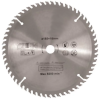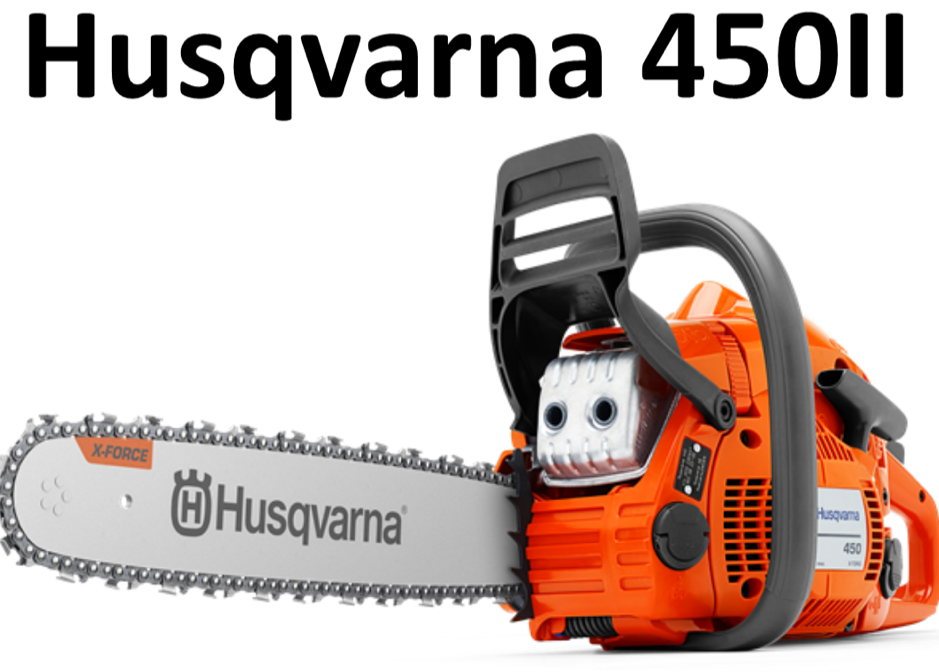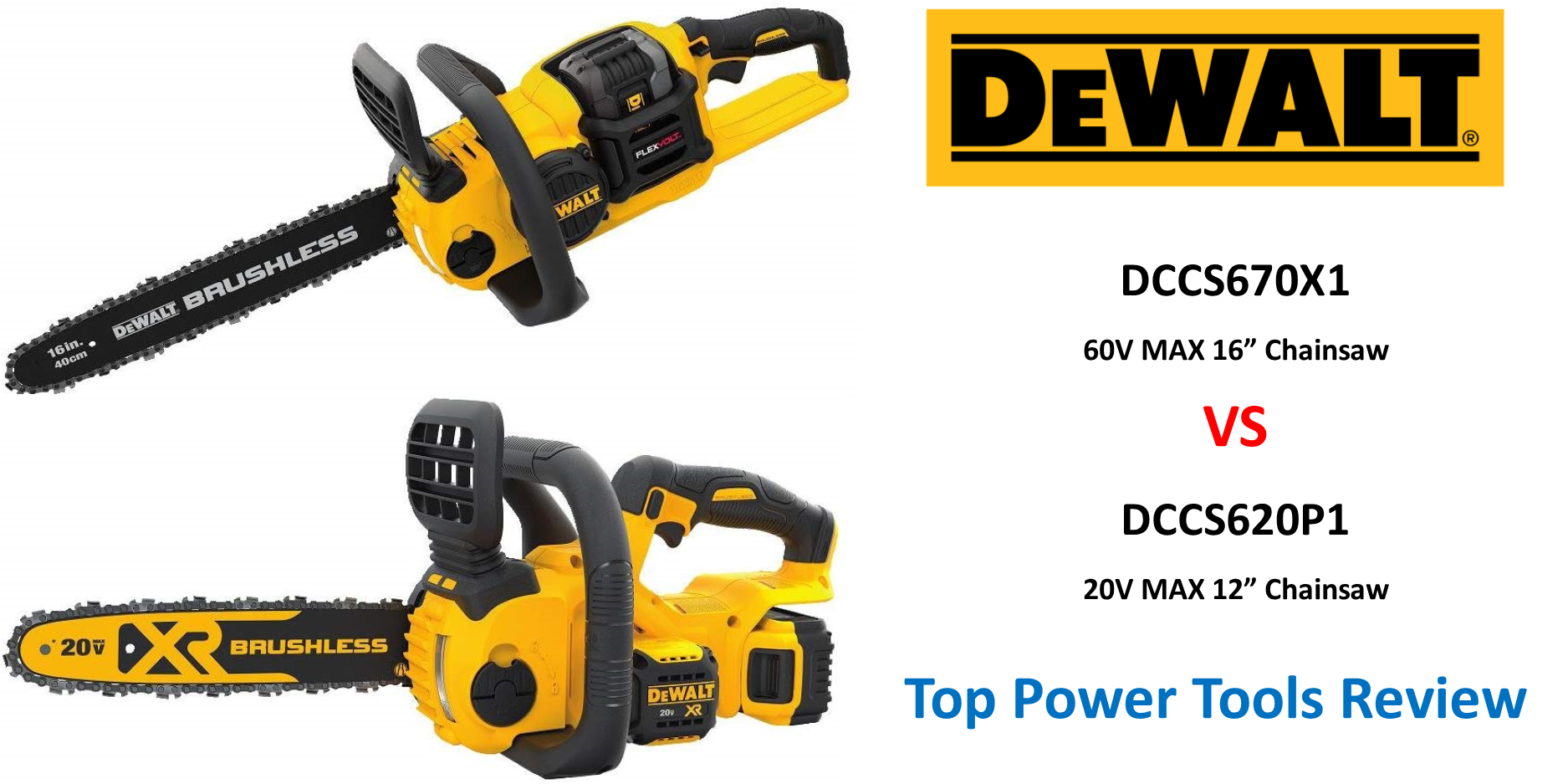UPDATED SEPTEMBER 2020
only the good die young. This can’t be said for the remarkable Husqvarna Rancher 450 chainsaw. After many years on the market, this gas-powered machine endures, despite the move by many to battery-powered alternatives.
What’s the trick? The name has a lot to do with it. Husqvarna is one of the oldest companies in the world and this Scandinavian brand has earned a reputation for brilliance in so many sectors of the manufacturing industry.
Like many, I have the greatest admiration for the brand. The Husqvarna Rancher 450II is one of my favorite gas-powered chainsaws of all time. This review will uncover what makes it an enduring winner amongst pros, farmers, and homeowners.
To spice things up, I’ll be comparing the Rancher 450II to its big brother the Husqvarna Rancher 460. These are both amazing chainsaws, depending on what you’re looking for. For those who still appreciate the go-anywhere, brute power of a gas chainsaw, this should be a great read.
If you’re curious about the Husqvarna brand history and where it all began, keep reading following the Husqvarna Rancher II review. I’ve researched the full Husqvarna company history and have provided a detailed account of where the Husqvarna Company began, their innovations, and achievements, right up to the present day. The Husqvarna Group has come a long way and now includes many major brands. It makes for an interesting read.
I believe the immense success of all the Husqvarna Rancher chainsaws (450; 455 & 460) lies in their versatility. As the name suggests, the Rancher was specifically developed for farmers and ranchers who require a robust, hardworking chainsaw.
This range is not as expensive as the heavy-duty pro-grade chainsaws, yet not as cheap as the domestic-grade machines. A perfect inbetweener for a specific market. I guess we can call them medium to heavy-duty chainsaws, priced accordingly.
When it comes down to it, the second-generation Husqvarna Rancher 450 is a highly competent chainsaw, able to rival the very best professional machines. Taken in this context, it’s wonderfully good value.
What’s the difference between the Husqvarna 450; 455; and 460?
Husqvarna Rancher chainsaws are, for the most part, the highest spec level from the brand. This means they all have much of the Husqvarna trademark technology that sets the brand apart from the crowd. This includes automatic lubrication, Husqvarna X-Torq engine with centrifugal air cleaning system, and low-vibration technology.
There is very little difference between the two smaller models (450 and 455), except for engine size. The 455 is more powerful than the 450.
The Rancher 460 can accommodate a larger bar and chain. The most striking difference between the 455 and 460 is the larger engine used for the 460, which is also more fuel-efficient with improved torque.
You can compare their specs by looking at the table below.
| Rancher 450 | Rancher 455 | Rancher 460 | |
| Engine Size | 50.2cc | 55.5cc | 60.2cc |
| Power output (HP) | 3.2 | 3.49 | 3.62 |
| Max Speed (RPM) | 9000 | 9000 | 9000 |
| Bar length | 13” – 20” | 13” – 20” | 13” – 24” |
| Chain Pitch | ³⁄₈” | ³⁄₈” | ³⁄₈” |
| Weight (excluding cutting equipment) | 11.2 LBS | 12.79 LBS | 12.79 LBS |
| CARB Compliant | Yes | Yes | Yes |
| Price | Click Here | Click Here | Click Here |
Features
- Air injection air cleaning system reduces filter cleaning
- Fuel efficient, low emission X-Torq engine – CARB certified
- Quick release air filter
- Ergonomic rear handle
- Smart start technology
- Low vibration
- Inertia activated chain brake
Husqvarna Rancher 450 II Review
As the cheapest model in the Rancher range, the Husqvarna 450 has great appeal for homeowners who want to do serious tree felling and cut firewood, as well as farmers, wood sculptors and professional users. Many attribute the enduring success of this chainsaw to its fantastic power to weight ratio and excellent reliability year in, year out.
The 50.2cc X-Torq engine used to power this model may seem a little small when compared to the rest of the Rancher chainsaw series. Though 3.2 horsepower is nothing to be scoffed at and this smaller engine does make the 450 a delightfully easy machine to use. It weighs only 11.2-pounds without the bar and chain. The 20” X-Force bar weighs just over 2-pounds and the X-cut chain only 10.2 ounces. So, even when using the maximum bar length, this little beauty weighs around 13-pounds, and is fantastically balanced. The 450 Rancher can accommodate a bar length of 13” – 20”.
Husqvarna have always been a trendsetter in developing technology that makes their power equipment more reliable and easier to use. While much of this technology is implemented by other manufactures, Husqvarna is usually the first to come up with inovative solutions. Generally, the first to do the R & D will always have the upper hand over the copycats. To the best of my knowledge, Husqvarna Air Injection is a good example of this first of its kind technology. This system uses centrifugal force to separate heavy debris from light sawdust in the air before it reaches the air filter, one the best technologies to used for a chainsaw. Remember how tedious it was constantly cleaning the air filter as it became clogged with woodchips and sawdust?
Another great innovation is the Husqvarna easy start system. Engine compression is automatically reduced when you pull on the recoil starter, this means a lot less force is required to fire up the engine. It’s also one of the quickest to start in cold weather and they’ve used a single switch to supply fuel, power the ignition, and activate the choke. The stop switch also has an auto return function; just in case you forget to reset it before restarting the chainsaw.
There are a whole bunch of really cool little gadgets that these guys have thought of. Access to the engine and air filter is a breeze and requires no tools. You simply release a clip with your fingers when you need to do routine maintenance. The flip-up tank filler cap makes refueling much easier when wearing leather gloves and a window at the filler allows you to check on the fuel level at a glance.
There’s very little vibration at the handles. The rear handle is remarkably comfortable and provides a firm grip. The front handle is also great, wrapping over the top of the chainsaw all the way down the left side, with a rubber grip for added comfort and safety. A large chain guard/chain brake, only a couple of inches from the front handle, also improves user safety. The only modern user aid that this chainsaw doesn’t have, is a tool-free chain tensioning mechanism. This is more in line with professional-grade machines as wrench tightening chain mechanisms remain reliable for longer. They’ve also given you easy access to the chain tensioner from the side. As one would expect from one of the top chainsaws, this model has automatic chain lubrication.
The Husqvarna Rancher 450 II looks the part in being a tough workhorse. It’s built to last and is every bit as reliable as I would expect a Husqvarna chainsaw to be. In the world of medium to heavy-duty chainsaws, the 450 Rancher is delightfully inexpensive, offering the best value for demanding chainsaw users. Yes, I love this chainsaw and have for a long time. Then again, you’ll be hard pressed to find a review that doesn’t sing high praises for this legendary chainsaw. Since I need to offer an objective review, I searched the web for any type of negative customer review/complaint with regards to the Rancher 450 II. Try as I may, there wasn’t any to be found, unless you see the one comment that this model is more expensive than the standard Husqvarna 450 chainsaw.
How to use a Chainsaw
Using a chainsaw for the first time, can be a daunting expereince. Chainsaw safety is paramount. Husqvarna has compiled an amazing, comprehensive, video on how to use a chainsaw. It covers everything from understanding your chainsaw, to using your chainsaw safely. This is the best user guide to chainsaws that I’ve seen. I highly recommend it.
The Husqvarna Story

Today, Husqvarna is a globally recognized brand, synonymous with class leading motorcycles and power equipment. When it comes to gas powered chainsaws, few manufacturers have earned the respect that Husqvarna has. To understand the history behind the Husqvarna brand, we need to go all the way to 1689. Join me on this fascinating journey from a small Swedish foundry to a global manufacturing and distribution giant.
Husqvarna started out as a rifle manufacturer. The original company was owned by the Swedish state and employed 1,000 workers. They continued manufacturing rifles for 300 years, up to 1989. The company derives its name from the site chosen for its original manufacturing plant in Huskvarna, Southern Sweden. At that time, hydro-power was the driving force behind all industrial activity. Flowing water was used to turn a large waterwheel which provided the mechanical energy for production machinery. The waterwheel was the historical equivalent of the modern-day electric motor. This made the waterfall at Huskvarna the ideal location for an industrious manufacturing facility.
Time marches on, and innovative companies adapt to the changing needs of history. After nearly 200-years of producing rifles, the Husqvarna company decided to diversify its operations. Since the machinery used for manufacturing rifles was ideally suited to building sewing machines, this was the direction the company took. Husqvarna started producing sewing machines in 1872 and continued to do so until 1997.
Following the immense success of Husqvarna sewing machines, the ever-innovative Swedish engineers took the next bold step. In 1874, they started manufacturing cast iron kitchen equipment, like meat grinders. It didn’t take long before the kitchen product range expanded to include stoves and ovens.
In 1862, bicycles were added to the growing range of Husqvarna products, something that continued until 1962. In more recent times, Husqvarna has reintroduced their bicycles, with the ultra-modern Enduro Cross electric bicycles. This has been a collaboration between Husqvarna, KTM Industries AG, and PEXCO.
With the turn of 20th century, a new technology was rapidly changing the world. The internal combustion engine offered new and exciting opportunities for innovators and consumers. In 1903, Husqvarna started manufacturing motorcycles and a legend was born. From this time up to when they divested from motorcycles in 1987, Husqvarna became known for outstanding lightweight, powerful, trail bikes. Winning many motorcycle rallies and trail events, these were amongst the most sought after off-road motorcycles for professional racers and amateur enthusiasts. The Husqvarna motorcycles brand continues to thrive as part of the KTM Group of Companies.
Having developed gas engines that were reliable, efficient, and lightweight, Husqvarna capitalized on this technology. After acquiring Norrahammars Iron Works, in 1919, the company made its entry into the outdoor equipment market. So began the legacy for which the brand is probably best known for, high-quality outdoor and gardening equipment. In 1945, Husqvarna built the first gas-powered lawnmower.
As Sweden evolved into one a world leader in forestry, Husqvarna took this opportunity to expand their product range, with the logical decision to begin manufacturing professional grade chainsaws. It was in 1959, that the Husqvarna name was first seen on lightweight, powerful chainsaws. Since then, chainsaws have been linked to the brand reputation, ultimately leading to the legendary Husqvarna Rancher and many other professional, semi-professional, and domestic chainsaws. Gas power cutters followed in 1968.
Over the years, Husqvarna has been responsible for many innovative breakthroughs in power equipment design. With many world first patents and technological developments:
- 1969: Chainsaw ergonomics are changed forever, when Husqvarna develops the first anti-vibration system for chainsaws.
- 1995: Husqvarna launch the world’s first solar powered robotic lawnmower.
- 2009: New robotic technology from Husqvarna, sees the first robotic demolition robot.
- 2016: Addressing global climate change, the Gardena Smart System is introduced as a high-efficiency irrigation system.
- 2017: Continuing to “go green”, Husqvarna build their first sustainable solar-power facility in Nashville.
- 2019: Husqvarna develops the most advanced robotic lawnmower, built for rugged terrain and capable of negotiating slops up to 70°.
In 1980, Husqvarna looked to expand their global presence, entering the US market in full force, by acquiring Poulan/Weedeater and Roper Corp. In 2002, Husqvarna acquires Diamant Boart and enters the industrial diamond tool market. Growth in the outdoor and gardening sector, coupled with a greater presence in Japan, saw Husqvarna acquire Gardena, Zenoah, and Klippo. Further market growth in Asia came when Husqvarna acquired Chinese handheld power equipment manufacturer, Jenn Feng, in 2008.
Going full circle, in 2015, Husqvarna returns to their origins, building a brand new, state of the art production facility in Huskvarna, the town where it all began more than 300-years prior.




